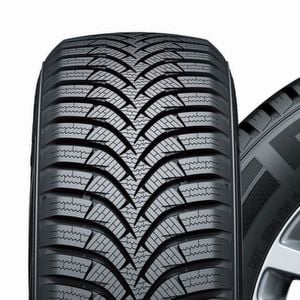Last Updated on 24.08.2023 by hrushetskyy
Recycled car tires are used for producing over 110 types of products such as:
- Civil engineering materials.
- Ground and railroad materials.
- Tire-derived fuel (TDF).
Recycled Car Tires Usage Options
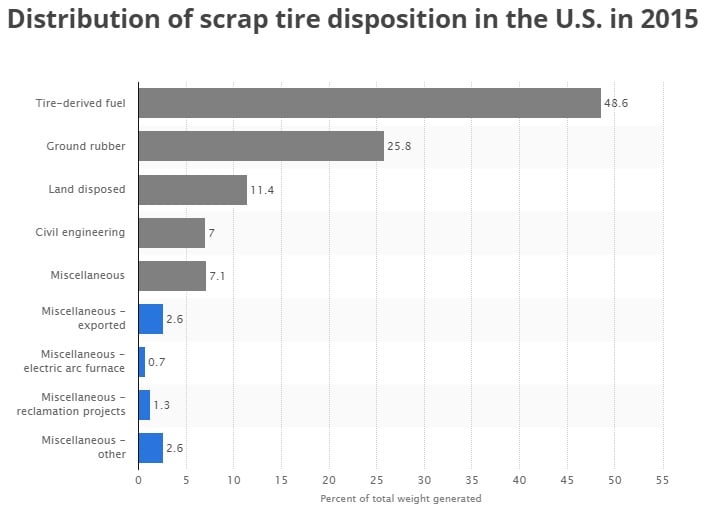
Civil Engineering
- T-Blocks.
20 to 40 tires can be used for one T-Block – a block of concrete with old rubber in it. Such blocks can be used for a number of purposes: erosion and flood control, sub-foundation stabilizers, etc. The blocks are made fire-resistant and last for more than 200 years.
Stone constructions are usually used for erosion control, but they were difficult to build and transport. Recycled car tires perform this function both in and out of water very well, and such an approach can recycle from 1,000 tires a day. - Eco-friendly home decks.
Rubber-polyethylene resin boards can serve well as home decks. They withstand extreme temperatures and need little maintenance. Besides that, the material doesn’t get damaged by insects or weather conditions, lasting for about 25 years.
Ground and Railroad Materials
- Railroad tires.
Rubber-wrapped railroad tires are made in layers to provide maximum durability. About 80 lbs of ground rubber is put on a concrete-steel beam, making it more than 200% stronger than regular tires. Such ties last for up to 90 years, saving railroads a large amount of money on using and replacing them. - Railway lines.
Another use of recycled car tires for railroads is railway lines. Rubber is a perfect material for this purpose, as it has great vibration-absorbing qualities.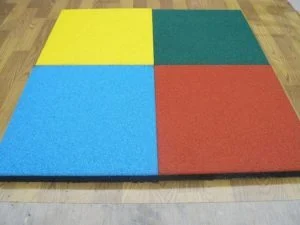
Rubber flooring tiles - Rubber floors.
Recycled car tires can be used to create rubber flooring that has gained much popularity, due to its wide variety of designs and colors. There are both pros and cons of this material, but the fact that it lasts up to 30 years attracts many people. Such floors don’t have to be waxed, as the material is nonporous. Moreover, no special products are needed to clean such floor, keeping the air inside mostly chemical-free. - Rubberized asphalt.
The ground rubber made from recycled can be also added to asphalt to improve the road. Rubberized asphalt prevents the road damage, saving money on maintenance. The material is also noise-absorbing, so road sounds are reduced by as much as 7 decibels. By 2005, about 7.4 million used tires were used for building new highways. - Playground elements.
Rubber absorbs shock from collisions, which makes it a perfect material for matts, running tracks, and playground equipment. Recycled car tires are clean, money-saving, durable, and require little maintenance; they can also be easily installed over any other material used previously.
Tire-Derived Fuel
Every tire contains 5 gallons of oil, and about 40% of the whole amount of recycled car tires goes to alternative fuel use. Its efficiency is 25% higher than that of coal, and the heavy metal containment in the ash from tire-derived fuel is lower than of some coals. Athough it emits harmful chemicals into the air, it’s still used as a kind of alternative fuel, burning within special machines that don’t allow many harmful emissions. TDF is mostly used in paper factories, electric utilities, cement kilns, etc.
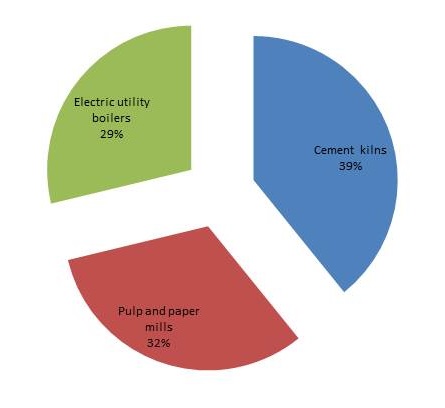
Other Uses of Recycled Car Tires
- Retreading.
About 16 million recycled car tires are used as retreads, which helps using less oil than when manufacturing a new tire. Retreading is a process of . - Non-specific uses.
There are many other uses of recycled car tires, including garden mulch, drainage foundations, shoe products for developing countries, etc. About half a million tons of tires become mulch, molded goods, etc.
Reusing Car Tires

Reusing a tire means finding a different purpose for a whole tire or its part that has ended its primary service. This doesn’t involve recycled car tires, even though many people confuse recycling and reusing. Tires can be re-applied for home and family needs, including swings for children, other kinds of attractions, planters, matts, pathways, and much more. There are many creative ideas on how to reuse tires at home.
Old tires can be also used to help people. For example, In Thailand, a huge playground was created from recycled car tires for refugee children from other countries. Another example is making tire logs for earthquake prone countries. Tires are sliced and rolled up, creating rubber logs that can be used in buildings or outside to make constructions more stable during earthquakes.
What Happens to Old Used Tires?
Used tires end up being stored in landfill or being processed at recycling plants. About 300 million tires are scrapped annually, at the rate of 1.1 tire per person, per year.
About 233 million tires are recycled every year by shredding, cryogenic grinding, liquid nitrogen exposure, devulcanisation process, etc.
The tires are taken from landfill and companies that buy used tires.
Aside from chemical treatment, tires undergo the following procedures at recycling plants:
- Steel liberation.
Steel wires from tires are removed to leave only rubber for further processing. The metal derived is then used for other recycling purposes. -
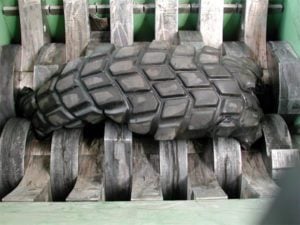
A tire shredding machine. Image source: tiresspa.com Whole tire processing.
During this stage, chemical procedures are carried out, or the tires are cut into 2-inch pieces to create piles of shredded rubber. Nitrogen and cryogenic treatments can turn shredded pieces into fine powder. Devulcanization will make it hard enough to be turned into mulch or crumb rubber. - Screening.
At this stage, recycled car tires are checked for wire and fiber leftovers. There have to be none, as the rubber has to be clean for further usage. - Cleaning.
All the rubber is then cleaned with water and special cleaning products. When the rubber is clean, it’s packaged and shipped to the companies that use it for manufacturing goods.
Benefits of Recycling Car Tires
- It offers a wide variety of products.
There is a great variety of products made from recycled car tires that can be more beneficial than traditional ones. For example, rubberized asphalt is less prone to cracks and absorbs more noise. - It converts waste to energy.
The example of tire-derived fuel shows that waste can literally be transformed into energy. It isn’t so eco-friendly, but it can remove scrap tires from landfill and save money on fuel. - Recycling saves energy and natural resources.
Less energy is used to produce reclaimed rubber or other materials from recycled car tires, in comparison to virgin resins. It also saves rubber trees, as the demand for new raw material is decreasing. - It reduces pollution.
Water pollution is reduced by cleaning lakes, rivers, and other water bodies of illegally dumped tires. The same goes for woods and other places that can’t store tires or other types of waste without inevitable harm.
Carbon footprint is reduced by 4 to 20 times with the usage of recycled car tires.
Greenhouse gas emissions are also reducing dramatically due to tire recycling. For instance, 4 repurposed tires can reduce about 323 pounds of CO2 (or 18 gallons of gasoline).
More Facts About Tire Recycling in the US
in the 1980s, the US landscape was covered with over 2 billion scrap tires, but about 90% of that is gone due to recycling. In 2011, most became recycled car tires, and the number of tires in landfill was already 76 million, but this is estimated data, as there’s no clear information on it.
Tires are non-biodegradable, so they don’t have to be left within landfill, but need to be properly recycled and reused. Fortunately, nowadays there are many ways to recycle car tires.

